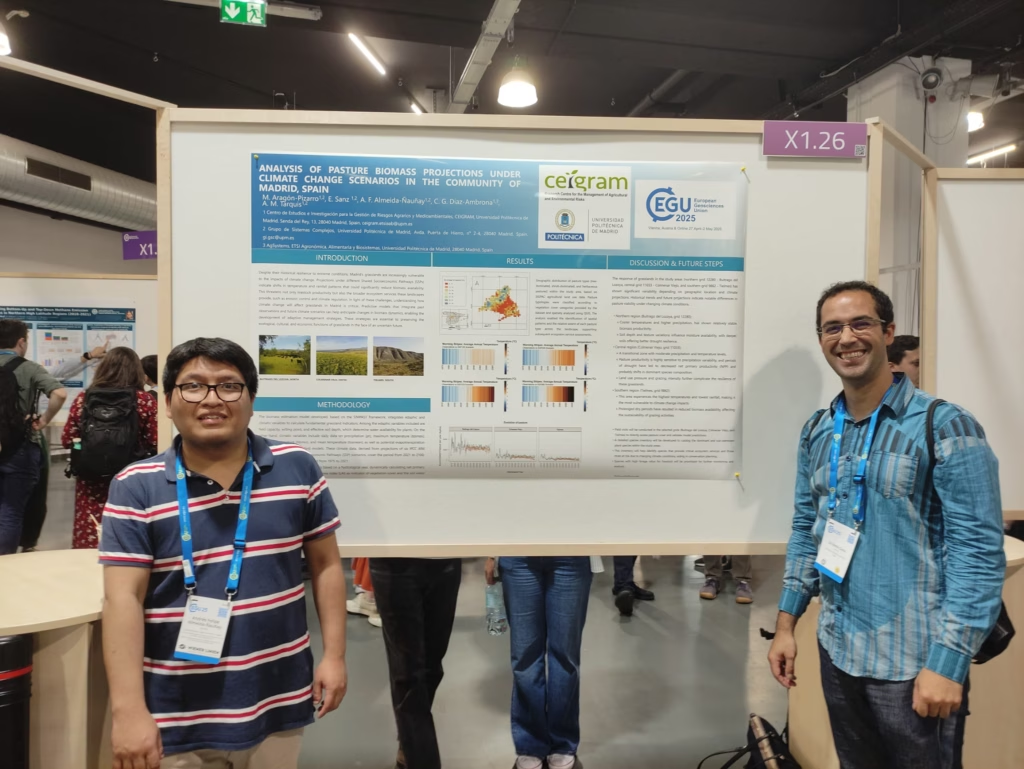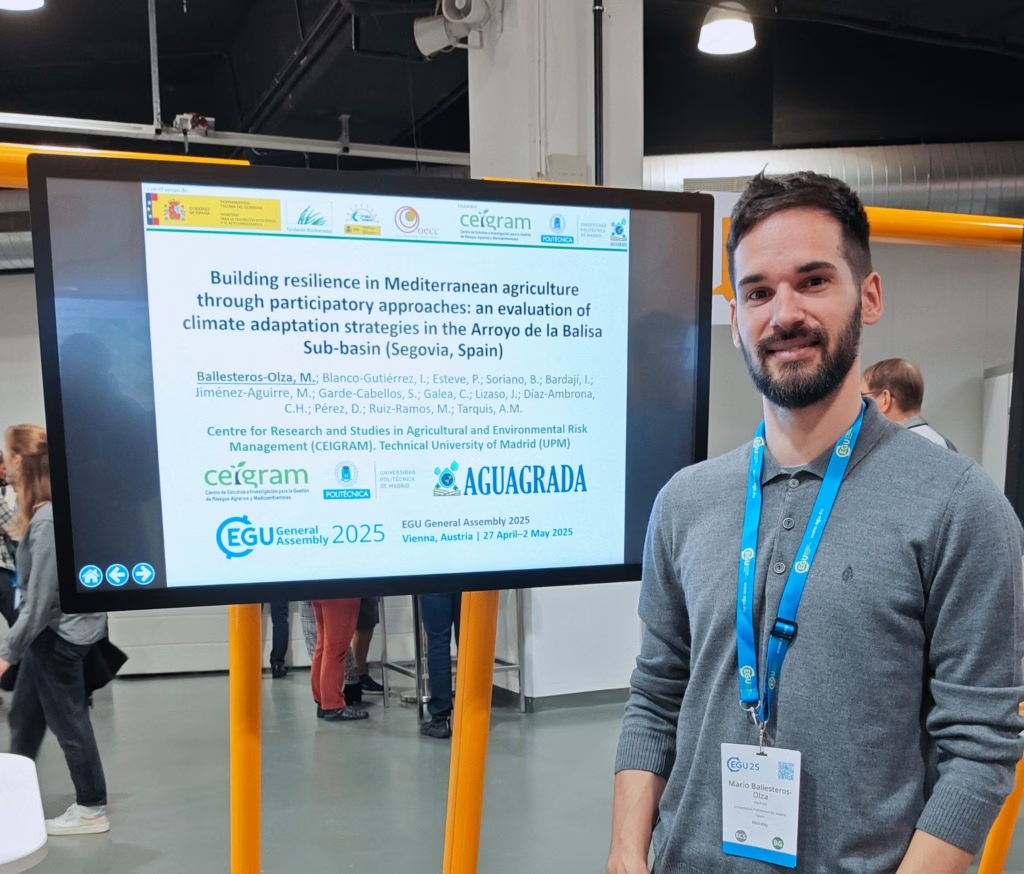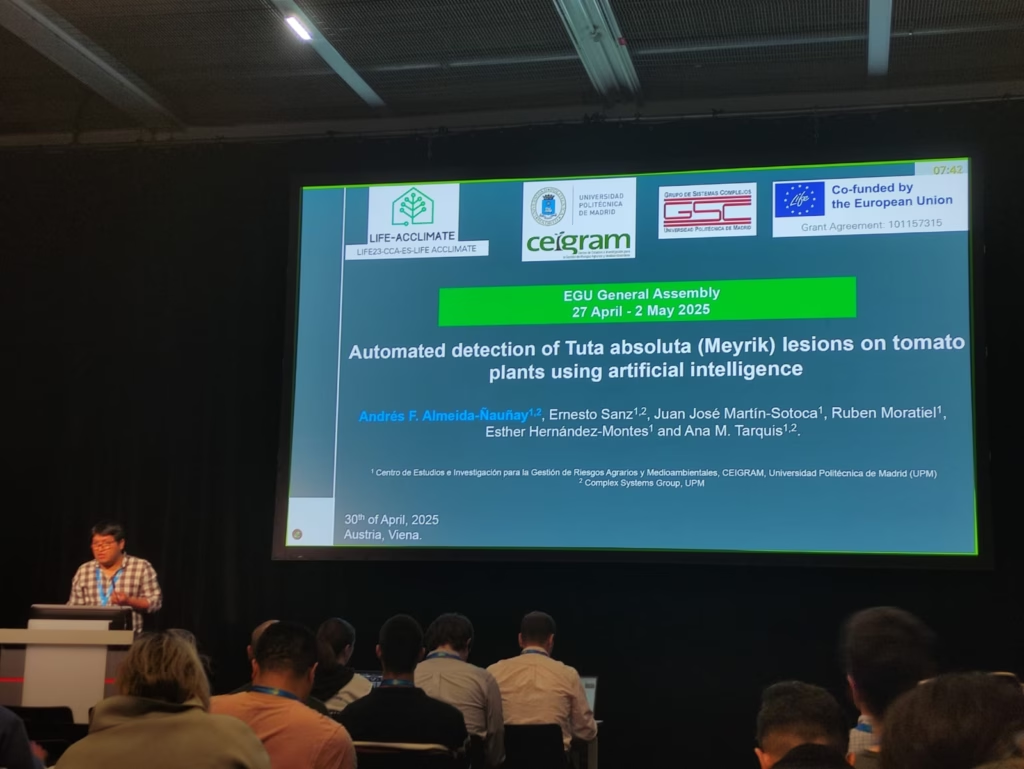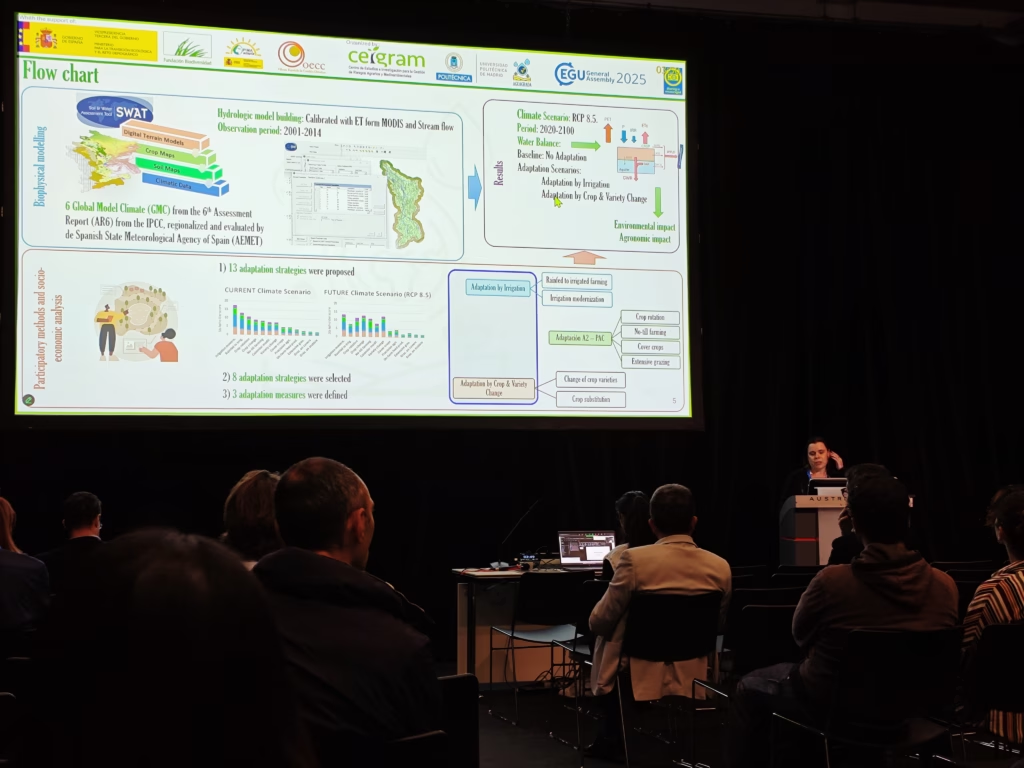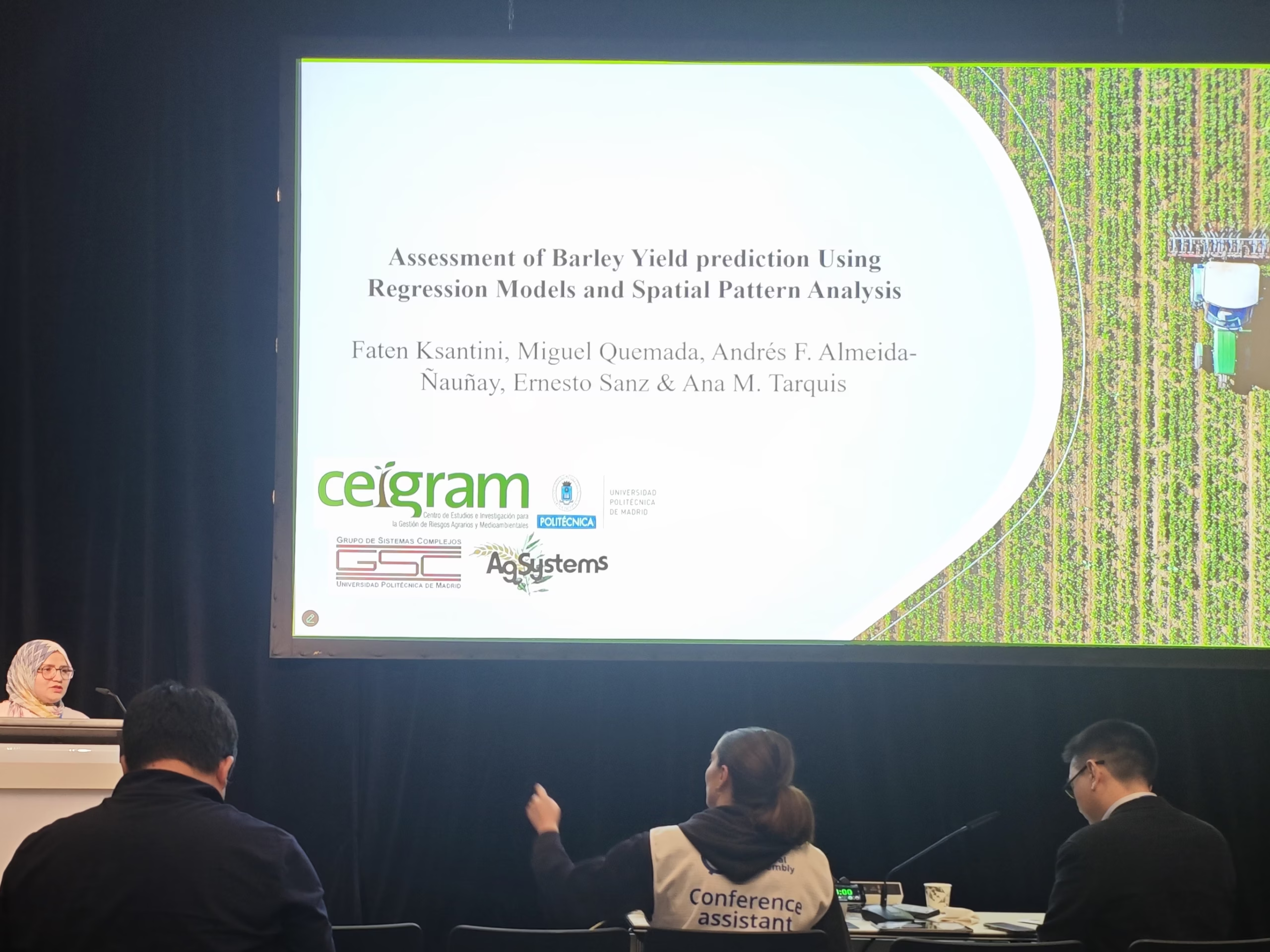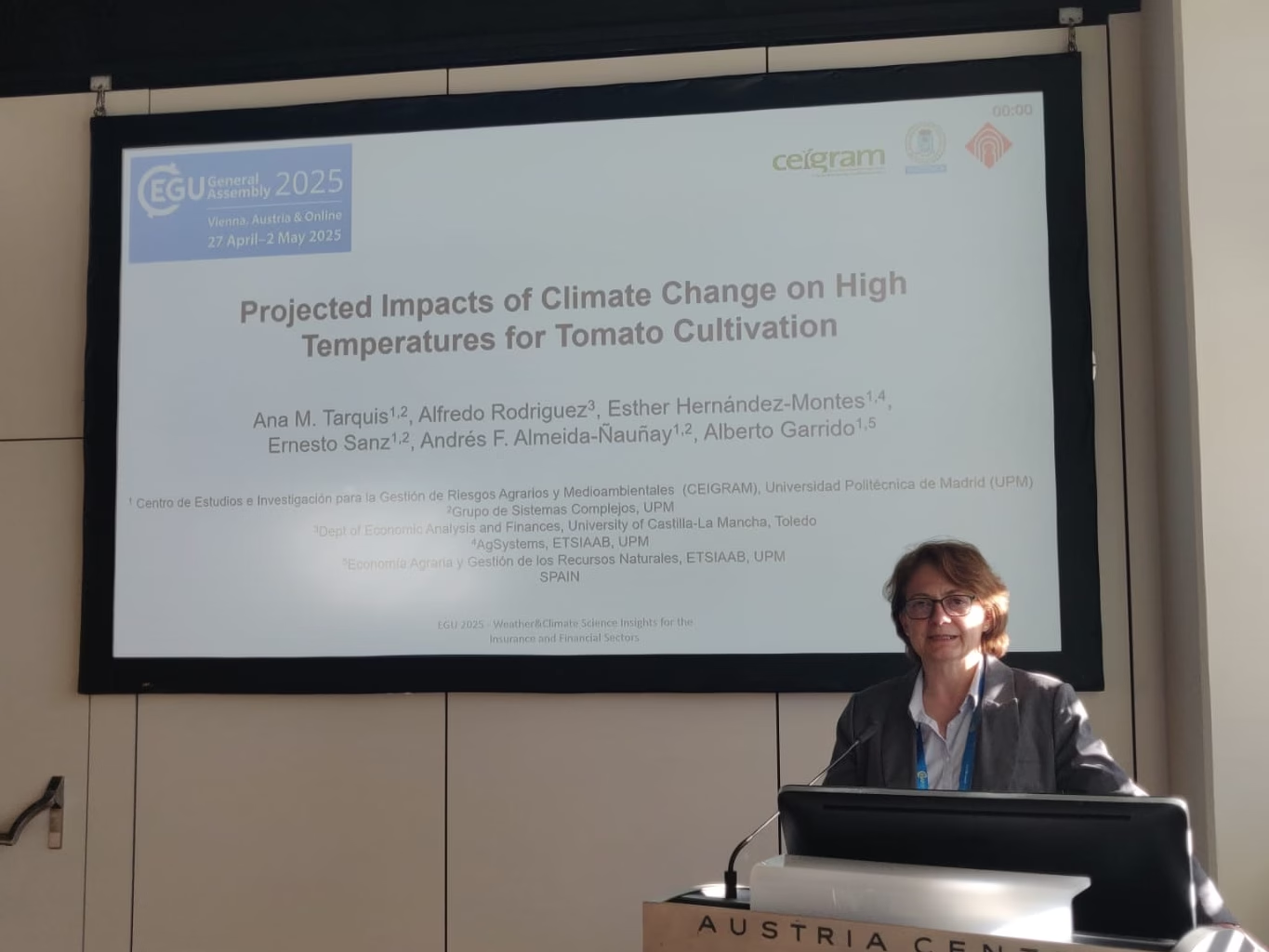As every spring, CEIGRAM has participated in the General Assembly of the European Geosciences Union (EGU) in Vienna, from April 27th to May 2nd. This international congress brings together thousands of scientists from all over the world to discuss advances in different fields of Earth Science. The goal of the EGU is to provide a space where scientists can present their research and discuss their concepts with specialists from all disciplines. Given the large attendance at this event, it has established itself as an outstanding space for the dissemination of CEIGRAM studies, with an important presence of its research team, maintaining a constant participation for more than 15 years.
In the 2025 edition, CEIGRAM was represented in Vienna by researchers Mario Ballesteros, Ernesto Sanz, Andrés Almeida, Faten Ksantini, María Teresa Jiménez, Sofía Garde and Ana María Tarquis.
The first to participate was Mario Ballesteros, from the AGUAGRADA project, presenting the socioeconomic evaluation of the adaptation measures collected during the participatory process with local stakeholders in his study area, the Arroyo de la Balisa, in Segovia. His presentation was entitled: “Building resilience in Mediterranean agriculture through participatory approaches: an evaluation of climate adaptation strategies in the Arroyo de la Balisa Sub-basin”.
From the second day, the posters of the BIGPREDIDATA Project and the study and characterization of pastures in the Community of Madrid were available for EGU attendees to see. Maite Novellón and Sara Lacalle, from the BigPrediDATA Project, titled their poster “Integrating Orthophotos and Field Data for Precision Vineyard Yield Prediction: A Case Study of Tempranillo Grapevines”, presenting an algorithm they have developed, capable of detecting the actual linear meters of production of their vineyard, excluding faults, based on an orthophoto of a Tempranillo plot arranged in trellis.
On the other hand, the poster on the Community of Madrid pasture study by Marcos Aragón, entitled: “Analysis of pasture biomass projections under Climate change scenarios in the Community of Madrid”, evaluated the type of pastures in different bioclimatic zones of Madrid, and then cross-checked these results with climate models with various climate change projections and how these may affect pastures in the future; the objective is to anticipate changes in biomass dynamics, allowing the development of adaptive management strategies.
Ernesto Sanz presented a study: “Clustering Soil Health Across Europe Using LUCAS Soil Dataset and Unsupervised Learning Techniques” which deals with soil health classification in Europe using unsupervised learning techniques, collecting key indicators such as organic carbon, pH or soil bulk density. The work made it possible to identify groups of soils with similar characteristics and different levels of degradation, which facilitates the detection of regions requiring adapted soil management. This study, developed in the framework of the European iCOSHELLs project, represents a scalable tool for monitoring soil health on a large scale and for decision making in agricultural and environmental policies.
On the third day of the Congress, Andres Almeida presented his study on detection of Tuta absoluta (Meyrik) lesions on tomato plants using artificial intelligence (Automated detection of tuta absoluta on tomato plants using artificial intelligence) and Faten Ksantini, with the estimation of the yield of a barley crop using regression models (Barley Yield Estimation Using Regression Models and Spatial Pattern Analysis). Andrés Almeida’s study, as part of an ambitious project to adapt greenhouse crops to climate change (LIFE-ACCLIMATE), developed an AI-based automated detection system to identify lesions caused by Tuta Absoluta, using the YOLO_v8 model, recognized for its efficiency in real-time detection, and has served to minimize the use of phytosanitary products by strengthening Integrated Pest Management (IPM).
Faten Ksantini delivered a study on barley yield estimation using regression models and spatial analysis, developed at the experimental farm “La Chimenea” (Aranjuez, Madrid). Using remote and proximity sensors -including soil electroconductivity measurements- and working at a resolution of 6 meters, two regression approaches, Multiple Linear Regression (MLR) and Random Forest (RFR), were applied. Beyond obtaining excellent predictive results (R² > 0.85), the work stands out for integrating spatial metrics to generate yield prediction maps, accurately identifying high and low productivity zones within the plot.
On the fourth day of the EGU25, Maite Jimenez, also from the AGUAGRADA Project, held a session on “Evaluating climate change impacts on cereal yields, water balance and irrigation strategies in the La Balisa Sub-Catchment”, showing the preliminary results of the project, through which they have sought the best adaptation strategies for crops in their study area according to models of climate change in the medium and long term. Adaptation strategies such as crop rotation, the choice of heat-resistant varieties or the transformation of some crops in favor of woody crops, such as pistachio and vines.
On the closing day, Professor Ana María Tarquis, Deputy Director of CEIGRAM, presented the results of the project developed for the Ministry of Agriculture of Malta, with the lecture “Projected Impacts of Climate Change on High Temperatures for Tomato Cultivation”, which addressed the definition, development and results of this project, which sought to adapt tomato production in this Mediterranean country to the changing conditions imposed by climate change.
